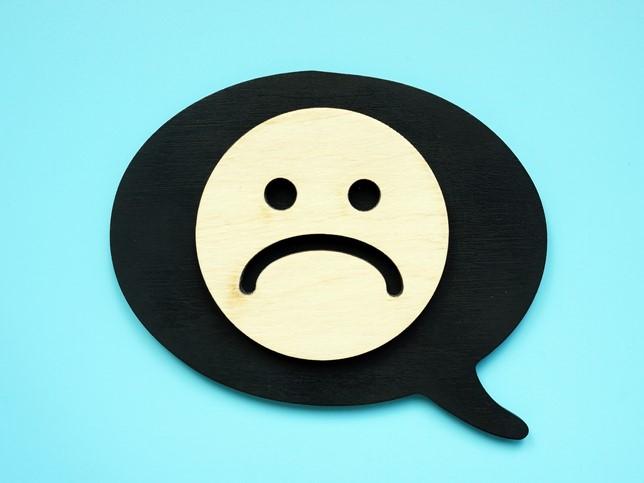
Create a psychologically safe space for honest feedback between colleagues

Critical thinking, analysis, evaluation and reflection are key academic literacies that are embedded in students’ curricula alongside subject-specific knowledge and skills. They are considered important graduate attributes by employers. As an academic, you should routinely be using these same skills in your own work. Academics writing research papers will be used to receiving constructive appraisals of their work from journal reviewers and editors as part of the writing process. However, those who are focused on developing learning materials, writing assessments or preparing communications may be less familiar with this process and unsure how to react to feedback from peers.
As an author or a reviewer in any such writing processes, do you feel that you work in a psychologically safe space in which you can present ideas, provide feedback and offer suggestions while collaborating with a peer?
Let’s consider first what constitutes a psychologically safe space before looking at techniques that can be applied to creating such a space and the potential impact of working in an unsafe space.
A psychologically safe space
Psychological safety is “the belief that you won’t be punished or humiliated for speaking up with ideas, questions, concerns, or mistakes. At work, it’s a shared expectation held by members of a team that teammates will not embarrass, reject, or punish them for sharing ideas, taking risks, or soliciting feedback,” according to the Center for Creative Leadership. Thinking about your immediate team or your wider professional network, do you feel confident sharing ideas and asking questions without fear of retribution?
How can we create a psychologically safe space in which academic rigour is maintained and colleagues working in the guise of author or reviewer can develop and maintain positive working relationships?
- Resource collection: The art of collegiality and why it matters
- There are no ‘single authors’: challenging individualism in academia
- All together now: how to write an interdisciplinary research proposal
Creating a psychologically safe space
First, develop a robust process that establishes clear aims, expectations and realistic timeframes. This should include the timely selection of authors and reviewers by those responsible for the project, such as programme leads or editors. Resources should be available that clarify expectations for authors and reviewers, such as the organisation’s editorial style and the review and approval process, like these guides provided by academic publisher Wiley for journal articles. An onboarding, self-access course that can be completed prior to taking on writing and reviewing responsibilities is also beneficial.
Clearly explaining the responsibilities of authors and reviewers is important because these can help pre-empt misunderstandings. This information could be presented in the form of job descriptions (if roles are being advertised), a welcome and Q&A webinar for authors and reviewers and through access to a key contact who liaises between the programme lead or editor and authors and reviewers, to clarify roles and deadlines.
Authors and reviewers should have a clear understanding of what the requirements are for the work being produced. These are likely to be defined by the project brief and standards. From your institution, this could be branding and style guides. If you are working with an external editorial team, they should provide an editorial brief and word count. Legal requirements, such as those relating to accessibility and copyright, must be included.
Reviewer feedback
When giving feedback, ensure you are clear about what is required from your review. Consider the key takeaway messages and overall tone of the comments you provide. We all like to hear something positive about our work, as well as constructive suggestions for improvement.
As part of onboarding, examples could be given of how feedback should be delivered. This will prepare the author for what to expect from the review.
Reviewer feedback can take many forms. It could consist of essential requirements and optional suggestions. It could include an overall summary in an email as well as comments in a shared document relating to specific points. If time allows, an online meeting could enable those involved in the process to discuss comments in depth.
Author response to feedback
Reflect on the feedback you received. Don’t rush to judgement. Your reviewer is likely to have invested significant time going through your work, to understand the subject matter and to want to maintain the organisation’s standards.
Don’t get caught up in the minutiae of the comments received; focus on the bigger picture. What was positive? What were the key takeaways that need actioning? Remember there may be a range of professionals who have reviewed various aspects of your work. In addition to a subject matter expert, an editor, a learning designer and a proofreader may all comment or make changes to what you have written.
If any of the feedback is unclear, seek clarification. This could be via email, comments in a shared document or communication with the key contact. Sometimes, it can be hard for the reviewer to explain what they mean in just a brief comment. So, rather than risk misinterpreting feedback, try to clarify comments you have received. However, this is not an opportunity to criticise another professional.
A constructive response to feedback
Academics invest many hours marking students’ assessments. When providing feedback, do you consider how your comments will be perceived by the individuals concerned? You have quite likely received emails from students or had them knocking on your office door asking questions. Did you respond by providing further explanation or with irritation?
Turning the tables, to receiving feedback on your own writing, you may at first feel curious and intrigued as to how your work is received by your peers. However, this may turn to frustration if amendments are requested. Consider how the reviewer may feel providing this feedback, particularly if they suspect it will not match their colleague’s expectations.
This is where your reaction to the feedback affects the psychological safety of all concerned. Before firing off an email, leaving a comment on a shared document or even posting a public tweet disagreeing with the feedback, make sure you have given the feedback proper, fair consideration. Approach the reviewer for an explanation of the comments in a non-confrontational manner. Embarrassing or humiliating the reviewer or rejecting their comments outright either privately or in open communication is neither professional nor constructive. It could have a huge impact on the reviewer who has invested time and energy in your work, and will reflect poorly on you.
Writing is developmental and collaborative. Take the opportunity to enjoy the process and to learn from each other.
Jennifer Pulkkinen is a learning designer at the University of Derby.
If you would like advice and insight from academics and university staff delivered direct to your inbox each week, sign up for the Campus newsletter.


